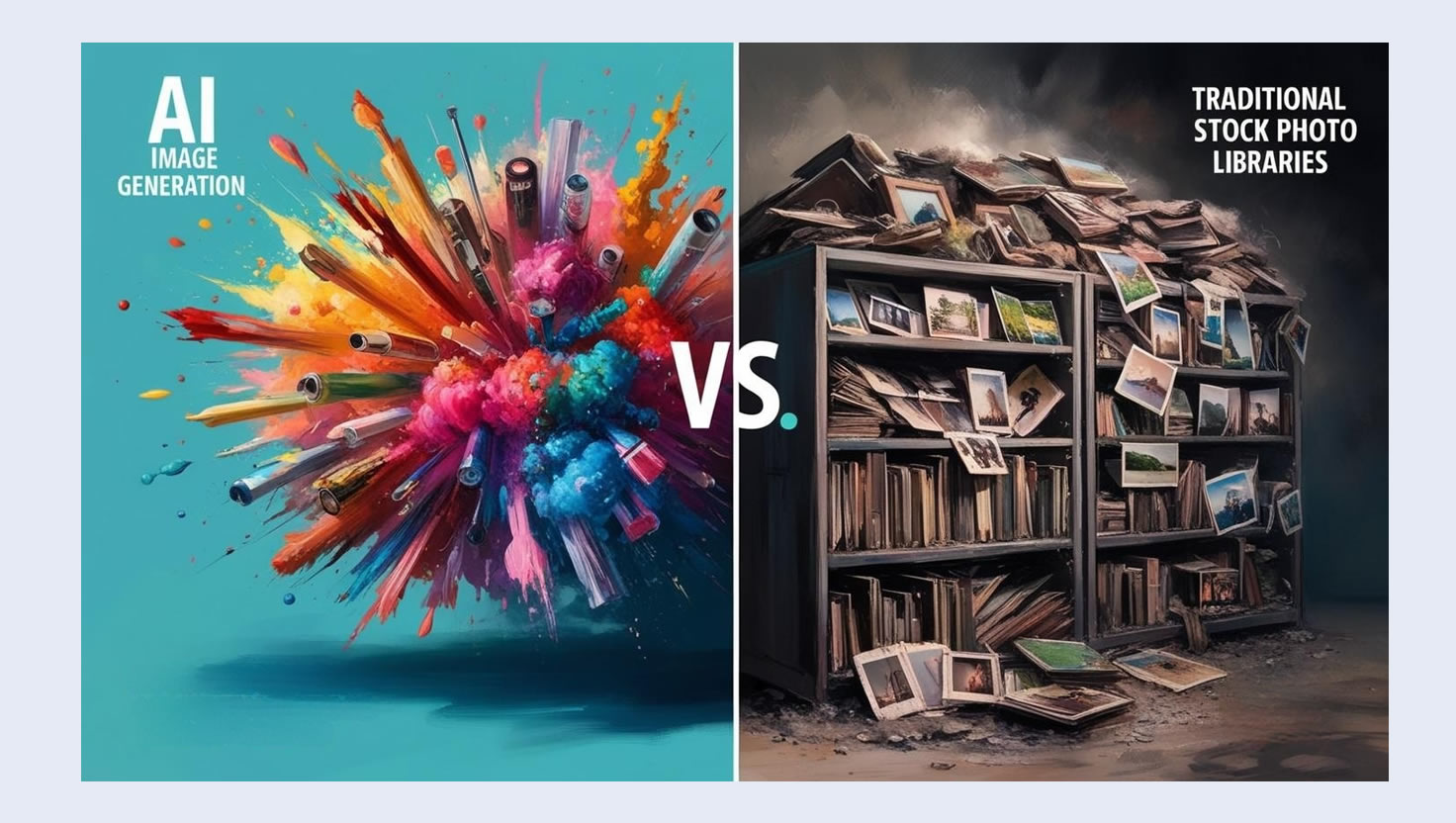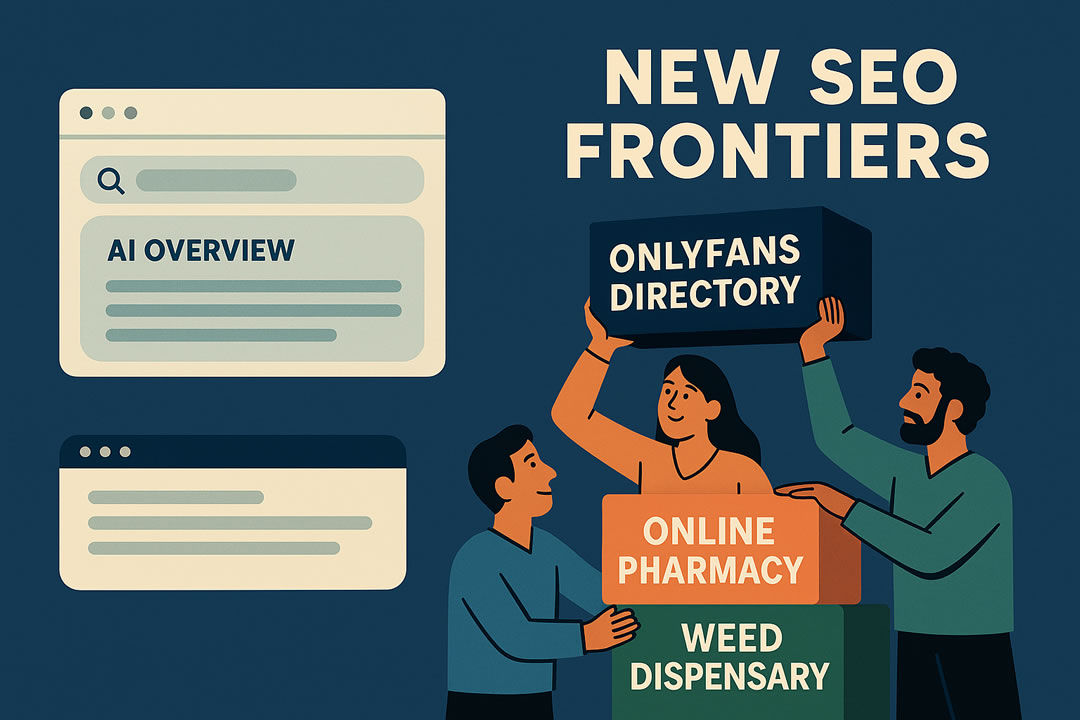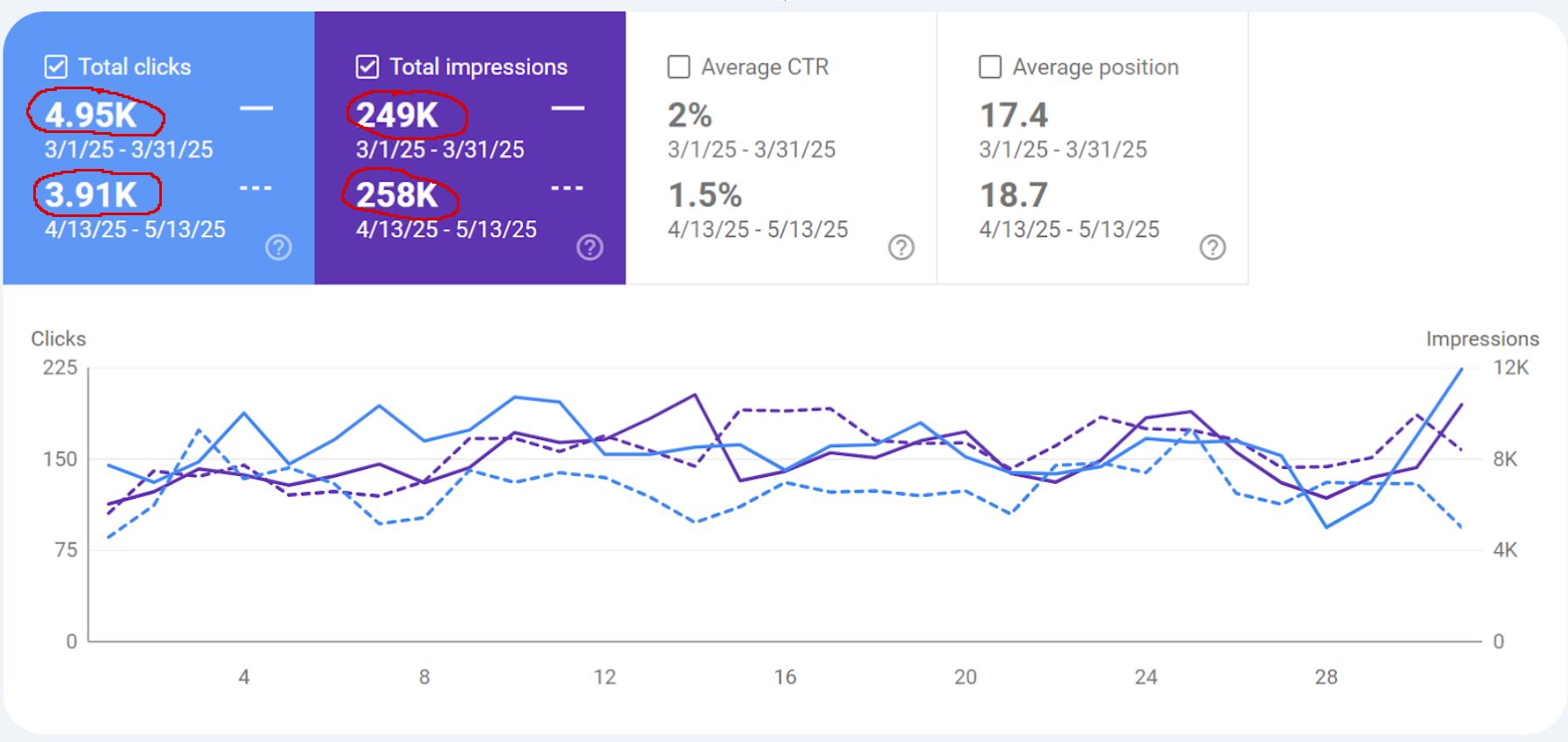
- Einstieg in AI: Der Stock Image Assassin
- Der Vorsprung, den AI hält: Billig, individuell und umstritten
- Shutterstocks Dilemma: Weiterentwickeln oder verschwinden
- Was dies über "grundsolide" Unternehmen aussagt
- Warum es für Entwickler wie mich (und alle anderen) wichtig ist
- Wie Shutterstock noch überleben könnte
- Das Fazit: Anpassen oder nach Hause gehen
Die Dinge ändern sich im digitalen Raum. In der einen Minute sind Sie die die Lösung der Wahl - grundsolide, unaufhaltsam, unantastbar. Dann, wie aus dem Nichts, entwickelt sich die Technik weiter, und Ihr einstmals kugelsicheres Ergebnis wird durchlöchert. Shutterstock, der Gigant unter den Bildanbietern, sieht sich genau dieser Bedrohung gegenüber - nur kommen die Schüsse jetzt von einer unaufhaltsamen Kraft namens Künstliche Intelligenz (KI).
Lassen Sie uns Klartext reden: Das Geschäftsmodell von Shutterstock war früher der Stoff, aus dem die Träume der Kreativen sind. Machen Sie ein Foto, laden Sie es hoch, und kassieren Sie Ihren Anteil, wenn jemand Ihre Arbeit lizenziert. Marken, Blogger und Webentwickler (wie ich) brauchten dringend professionelle Bilder, und Websites wie Shutterstock deckten diesen Markt ab. Es gibt kein Aufheben, kein Drama, nur das süße Klingeln der Lizenzgebühren, die in Milliardenhöhe fließen.
Einstieg in AI: Der Stock Image Assassin
Aber Moment mal. Da kommt die KI mit unglaublich raffinierten Fähigkeiten. Sicher, sie ist nicht neu im Sinne von "Ich habe Terminator gesehen", aber die Geschwindigkeit, mit der AI-Bilderzeugung auf den Plan gerufen hat, ist geradezu wild. Sie brauchen ein Bild eines futuristischen Roboters mit einer Blumenkrone? Geben Sie ein paar Begriffe ein, warten Sie, bis die Maschine ihre Arbeit getan hat, und schon haben Sie ein Bild, das genauso gut (oder besser) aussieht wie viele andere, die Sie auf einer Website finden - und vielleicht hat es sogar die richtige Farbpalette für Ihre Marke.
Machen wir uns nichts vor: Dies ist der Moment, vor dem sich die Anbieter von Archivbildern gefürchtet haben. Der große Vorteil von Stockbildern - die schnelle Bereitstellung professioneller Bilder - wurde soeben von der fast sofortigen, fast kostenlosen Erzeugung von KI überschattet. Und seien wir ehrlich: "Fast kostenlos" ist ein absoluter Magnet für Freiberufler, kleine Unternehmen, Nebenjobber und alle anderen, die mit wenig Geld auskommen müssen. Leute, die früher monatliche Abonnements für Archivfotos bezahlt haben, können jetzt ohne viel Aufhebens auf KI-Lösungen umsteigen. Klingt nach einem Problem? Und ob.
Der Vorsprung, den AI hält: Billig, individuell und umstritten
-
Geringe oder keine Kosten: Anstatt für einzelne Bilder oder Premium-Tarife zu bezahlen, können Sie ein paar Dollar für Rechenzeit auf einem Cloud-GPU ausgeben - oder sogar Open-Source-KI lokal ausführen, wenn Ihr System damit umgehen kann. Sie können so viele einzigartige Bilder erstellen, wie Sie möchten, und sie sind alle im Grunde kostenlos, nachdem Sie das System eingerichtet haben.
-
Ultra-anpassbar: Archivfotos? Sie blättern durch Seiten in der Hoffnung, das "perfekte" Foto zu finden - und in 10% der Fälle gelingt es Ihnen auch. Wenn Sie ein Foto von einer "orangefarbenen Katze im Geschäftsanzug, die bei Sonnenaufgang Kaffee trinkt" suchen, können Sie mit AI genau das bekommen. Und wenn es beim ersten Mal nicht perfekt ist, können Sie Ihre Eingabeaufforderung ändern und ohne zusätzliche Kosten eine neue Version erstellen.
-
Originalität: Jeder, der schon einmal Archivbilder verwendet hat, kennt den unangenehmen Moment, in dem man denkt: "Moment, eine andere Website hat dasselbe Foto verwendet". KI löst dieses Problem, indem sie unendlich variable Bilder ausspuckt, die alle Art von Ihre. Sie sind nicht mehr auf eine Datenbank mit Bildern angewiesen, die überall im Internet zu finden sein könnten.
Aber wir sollten nicht so tun, als ob bei der KI alles eitel Sonnenschein wäre. Es gibt eine merkwürdige Grauzone mit Trainingsdaten und Urheberrechten. Einige KI-Modelle kratzen Bilder aus dem Internet - Bilder, die auch von Shutterstock stammen könnten. Ironischerweise könnte Shutterstock indirekt zu seinem Untergang beigetragen haben, da es Teil der umfangreichen Datensätze ist, die zum Trainieren dieser KI-Maschinen verwendet werden. Igitt.
Shutterstocks Dilemma: Weiterentwickeln oder verschwinden
Shutterstock ist nicht blind. Sie haben die KI-Welle kommen sehen und sind auf den Zehenspitzen getaucht. Sie sind Partnerschaften mit KI-Unternehmen eingegangen, haben KI-gesteuerte Suchfunktionen integriert und Schlagzeilen über "KI + Aktien = die Zukunft" veröffentlicht. Aber ist das genug?
Man kann nicht einfach KI über ein Lizenzmodell streuen und hoffen, dass es auf magische Weise relevant bleibt. Die Monetarisierung einer nutzergenerierten Bibliothek wird kompliziert, wenn die neue Welle von Inhalten maschinell generiert wird. Kreative könnten weniger herkömmliche Fotos hochladen, wenn sie keine realen Chancen auf Einnahmen sehen. Die Leute könnten beschließen, dass sie Ihre Bibliothek nicht brauchen, wenn sie selbst neue Bilder erstellen können.
Die Neuausrichtung eines riesigen Unternehmens ist immer eine schwierige Aufgabe. Erinnern Sie sich an Blockbuster? Sie versuchten, auf Versandhandel und Streaming umzustellen. nach Netflix hat bewiesen, dass es funktioniert. Spoiler-Alarm: Sie wurden im Staub zurückgelassen. Das ist die große Befürchtung von Shutterstock: Sie werden "das Richtige" tun. zu spät.
Was dies über "grundsolide" Unternehmen aussagt
Diese Geschichte erinnert mich an unzählige Unterbrechungen, die wir im letzten Jahrzehnt erlebt haben:
-
Kodak: Einst galt das Unternehmen als unerschütterlicher Gigant der Filmfotografie. Dann kamen die Digitalkameras, und die Weigerung von Kodak, sich umzuorientieren, machte das Unternehmen schnell zu einem abschreckenden Beispiel.
-
Taxigewerbe: Die traditionelle Droschke war eine feste Größe in der Stadt, und dann puff-Uber trat auf den Plan, definierte den Markt neu und sorgte dafür, dass die alte Garde sich abmühte, mitzuhalten.
-
Inhalt Bauernhöfe: Einige Websites florierten, weil sie große Mengen an minderwertigen Inhalten produzierten. Dann änderte Google seinen Algorithmus, und diese Websites wurden über Nacht in die Strafbox geschickt.
Dies ist eine ernüchternde Erinnerung daran, dass Stabilität in der Wirtschaft schneller verschwinden kann, als man "Algorithmus-Update" sagen kann. Scheinbar kugelsichere Unternehmen können unter die Räder kommen, wenn sie es versäumen, neue Technologien zu nutzen oder grundlegende Veränderungen im Verbraucherverhalten zu ignorieren.
Warum es für Entwickler wie mich (und alle anderen) wichtig ist
Ich habe schon immer Stockbilder für Portfolio-Projekte, Kunden-Websites und zufällige Blog-Beiträge genommen - schnell, einfach, ein Kinderspiel. Aber alles änderte sich, als ich einige Tools zur KI-Generierung in die Hände bekam. Plötzlich kann ich Bilder so anpassen, dass sie genau zu der Stimmung passen, die ich haben möchte, anstatt aus dem gleichen alten Archivfoto eines multiethnischen Teams zu wählen, das sich in einem Konferenzraum zuprostet (Sie wissen schon, das eine).
Für uns Webentwickler ist das von großer Bedeutung. Wir sind immer auf der Suche nach Möglichkeiten, unsere Websites hervorzuheben. Originelle Bilder sind ein sofortiger SEO- und Branding-Boost. AI hilft uns, diese Einzigartigkeit zu erreichen. schnell. Aber in einem größeren Rahmen ist es auch ein warnendes Beispiel dafür, dass man beweglich bleiben muss. Wenn wir nicht offen für neue Technologien sind, wachen wir eines Tages auf und stellen fest, dass wir einen kompletten Umbruch verpasst haben - genau wie Aktiengesellschaften, die nicht Schritt halten können.
Wie Shutterstock noch überleben könnte
Für Shutterstock ist das Spiel noch nicht vorbei - zumindest noch nicht. Sie haben eine massive Markenpräsenz und eine riesige Nutzerbasis, die ihnen vertraut. Außerdem gibt es rechtliche Probleme mit KI-Bildern. Unternehmen, die garantierte Klarheit bei der Lizenzierung wünschen, bleiben vielleicht bei Bildagenturen, um potenzielle Urheberrechtsalpträume zu vermeiden. Und eine Teilmenge der Leute schätzt die Echtheit (d. h. der Kontext, der Ort, die menschliche Authentizität) in aktuellen Fotos.
Aber Shutterstock könnte florieren:
-
Setzen Sie auf Qualität: Stellen Sie sicher, dass Sie verifiziertes, erstklassiges und garantiert legales Bildmaterial erhalten. Positionieren Sie sich als "sichere Wahl", wenn Sie es nicht riskieren können, ein KI-generiertes Bild zu verwenden, das jemandem auf die Füße treten könnte oder auch nicht.
-
Bieten Sie eine Killer AI Generation Suite an: Wenn sie KI integrieren können, die besser, bequemer oder markenfreundlicher ist als kostenlose Alternativen, könnten sie zahlende Kunden behalten, die einen optimierten Service schätzen.
-
Diversifizierung über Stillleben hinaus: Sie beschäftigen sich mit Musik, Filmmaterial und redaktionellen Bildern. Das könnten sie noch ausbauen. Die Erzeugung von KI-Videos steckt noch in den Kinderschuhen; vielleicht ist das ihre nächste große Chance.
-
Werden Sie der ethische Standard: Wenn sie ein Entschädigungsmodell für Künstler finden können, wenn die KI ihre Bilder zum Lernen verwendet, könnte ihnen das viel Wohlwollen einbringen (und die Urheber bei der Stange halten).
Das Fazit: Anpassen oder nach Hause gehen
Ob Sie nun ein Entwickler, ein Vermarkter, ein Geschäftsinhaber oder ein neugieriger Beobachter sind, die Shutterstock-Geschichte ist eine deutliche Erinnerung daran, dass es in der Tech-Branche so ist, nichts bleibt auf der Stelle stehen. Die KI ist da, sie wird nicht verschwinden und ganze Branchen umkrempeln. Heute sind es Aktienbilder, morgen ist es wer-weiß-was.
Für diejenigen, die diesen Umbruch in der ersten Reihe erleben, ist das aufregend - vielleicht sogar ein bisschen beängstigend. Aber wenn wir nicht an der Spitze dieser Trends bleiben, riskieren wir, das folgende abschreckende Beispiel zu werden. Wenn Sie das nächste Mal denken, ein Unternehmen oder ein Markt sei unantastbar, denken Sie daran: Alles ist gut...bis er es nicht mehr ist. Und dank der künstlichen Intelligenz könnte dieses "ist nicht" schneller passieren als erwartet.
Ja, Shutterstock schien vor ein paar Jahren in Granit gemeißelt zu sein. Jetzt wacht das Unternehmen in einer Welt auf, in der "perfekte" Bilder von Leuten mit einem anständigen Grafikprozessor oder einem Abonnement für einen KI-Generator aus dem Nichts gezaubert werden können. Die eigentliche Frage ist: Können sie einen anderen Gang einlegen, ihre Aufgabe verfeinern und relevant bleiben? Oder werden sie sich in die Riege der bekannten Unternehmen einreihen, die einst das Sagen hatten, nur um dann zu verschwinden, als sich die Technik zu schnell veränderte?
Wenn ich sie wäre, würde ich umschwenken. gestern. Denn im großen Schema des digitalen Lebens kann sich "felsenfest" in kürzester Zeit in Treibsand verwandeln - und KI ist dabei nicht gerade sanft.




